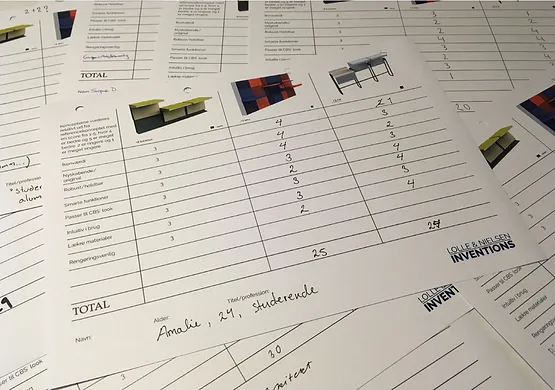Choosing the right concept is crucial when inventing new products. For that reason, we keep using the tried and tested ’Weighted Objectives Method’.
At the beginning of the development cycle of a new product, we always end up with a handful of candidates after ideation.
Sometimes we pick one of the concepts at the stage, most times we need multiple mockups or prototypes before choosing the right concept for the market.
But we always use the same method when evaluating and choosing: Weighted Objectives Method or simply WOM.

When inventing a new product, it’s important to have a series of objectives or challenges that the product should end up solving.
For the Flip Bench, we developed for Copenhagen Business School, it was criteria such as ”Icon value”, ”Intuitive to use” and ”Cleaning friendliness”.
All concepts have to fulfil these criteria, and when using WOM, all the criteria are mashed into one assessment matrix. From here, each concept or prototype gets a score for each criterion.
By accumulating the score from each criterion, it’s easy to get an overview of how the concepts stack up against each other using the Weighted Objectives Method.

WOM is really a textbook method that every design engineer learn early on in their studies. And already when you hear about it the first time, it can seem quite piddly.
Nevertheless, it’s a method most students keep using – and 10 years into Lolle & Nielsen Inventions we do so as well.
Maybe that is actually the beauty of WOM. It’s really simple and really effective – so why overcomplicate it?
